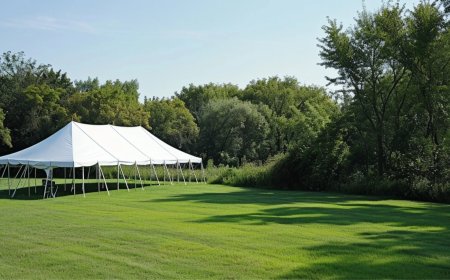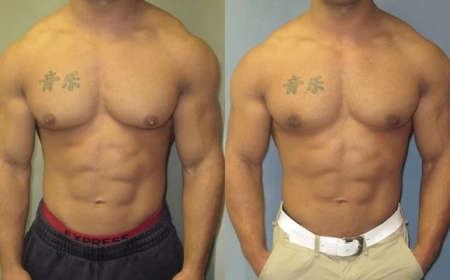Ache Neck in Cyclists: Tips for Relief
Explore effective tips for relieving neck pain in cyclists, including posture adjustments, stretches, and ergonomic solutions. Learn how to reduce discomfort and enhance your cycling experience with our practical guide.

Cycling is a fantastic way to stay fit, explore the outdoors, and enjoy the rhythm of the ride. However, neck pain can turn an exhilarating journey into a grueling ordeal. Whether youre a weekend rider or a daily commuter, prolonged time in the saddle can strain your neck, leading to stiffness, soreness, or even sharp pain. This blog dives into practical tips to relieve neck pain in cyclists, from posture tweaks to medications like tapentadol 200 mg, helping you ride longer and stronger.
Why Do Cyclists Get Neck Pain?
Neck pain in cyclists often stems from prolonged forward head posture, tight muscles, or improper bike fit. Holding your head up to watch the road strains the cervical spine, while hunched shoulders and a rounded back exacerbate tension. Other culprits include ill-fitting helmets, weak core muscles, or riding on rough terrain, which jars the neck. Symptoms may include aching, stiffness, or pain that radiates to the shoulders.
Practical Tips to Relieve Neck Pain
Optimize Your Bike Fit
A professional bike fit can work wonders. Ensure your handlebars are at the right height too low, and youll crane your neck; too high, and youll strain your shoulders. Adjust your saddle height so your knees are slightly bent at the bottom of the pedal stroke. A neutral spine position reduces neck stress.
Improve Riding Posture
Keep your shoulders relaxed and avoid hunching. Engage your core to support your upper body, and tilt your pelvis slightly forward to maintain a natural spine curve. Periodically tuck your chin to align your head with your spine, reducing forward head posture.
Stretch and Strengthen
Incorporate neck and upper back stretches into your routine. Try these:
- Chin Tucks: Pull your chin back gently, holding for 5 seconds. Repeat 10 times.
- Neck Side Stretch: Tilt your ear toward your shoulder, holding for 20 seconds per side.
- Upper Trapezius Stretch: Drop one shoulder and tilt your head away, holding for 20 seconds.
Strengthening exercises like planks or rows build core and back muscles, supporting better posture during rides.
Take Breaks and Vary Position
On long rides, stop every 3060 minutes to stretch your neck and shoulders. Shift hand positions on the handlebars to change your posture, reducing sustained strain. Drop bars, hoods, or tops offer different angles to ease neck tension.
Non-Medical Pain Relief Strategies
Heat and Cold Therapy
Apply a warm compress before riding to loosen tight muscles or after to relax them. Use a cold pack for 15 minutes if your neck feels inflamed post-ride to reduce swelling.
Massage and Foam Rolling
A gentle neck or upper back massage can release tension. Use a foam roller or massage ball to target tight spots in your trapezius or rhomboid muscles. Avoid pressing directly on the spine.
Ergonomic Gear
Choose a lightweight, well-fitted helmet to avoid extra strain. Padded cycling gloves can absorb road vibrations, reducing jarring to your neck. Consider a bike with shock-absorbing forks if you ride on rough trails.
When to Seek Professional Help
If neck pain persists despite these strategies, consult a healthcare provider. They may recommend:
- Physical Therapy: A therapist can design a program to address muscle imbalances or posture issues.
- Imaging: X-rays or MRIs can rule out serious conditions like herniated discs or arthritis.
- Injections: Corticosteroid injections may reduce inflammation in severe cases.
Complementary Approaches for Long-Term Relief
Yoga and Pilates
These practices improve flexibility, core strength, and posture. Poses like cat-cow or thread-the-needle target neck and upper back tension. Attend classes designed for cyclists or follow online sessions.
Acupuncture
Inserting fine needles into specific points may relieve muscle tension and pain. Some cyclists find regular sessions reduce chronic discomfort.
Hydration and Nutrition
Dehydration can tighten muscles, worsening neck pain. Drink water before, during, and after rides. Anti-inflammatory foods like berries, nuts, or fatty fish may support muscle recovery.
Over-the-Counter and Prescription Medications
For mild pain, over-the-counter NSAIDs like ibuprofen or acetaminophen can reduce inflammation and discomfort. For more intense or chronic neck pain, prescription medications may be necessary.
Tapentadol 200 mg: A Prescription Option
Tapentadol 200 mg is a potent analgesic used for moderate to severe pain, including chronic neck pain in cyclists. Its dual actionopioid receptor agonism and norepinephrine reuptake inhibitionprovides effective relief with fewer side effects than traditional opioids.
- Dosage: Typically 50200 mg every 46 hours, as prescribed, based on pain severity.
- Benefits: Fast-acting, with reduced risk of gastrointestinal issues compared to other opioids.
- Precautions: May cause dizziness, nausea, or drowsiness. Avoid driving or operating machinery until you know how it affects you. Not suitable for those with a history of substance abuse or certain medical conditions.
- Prescription Requirement: Must be prescribed by a healthcare provider. Regular monitoring is essential to prevent dependency.
Consult your doctor before starting tapentadol or combining it with other medications.
FAQs
Q: How can I tell if my bike fit is causing neck pain?
A: If pain worsens during or after rides and improves with rest, your bike fit may be the issue. A professional bike fitter can assess handlebar height, saddle position, and frame size.
Q: Is tapentadol 200 mg safe for regular use?
A: Tapentadol should only be used as prescribed. Long-term use requires medical supervision due to risks of tolerance or dependency.
Q: Can neck pain from cycling lead to serious injury?
A: Most cases are due to muscle strain, but persistent pain could indicate a herniated disc or nerve issue. Seek medical advice if pain radiates or includes numbness.
Q: How often should I stretch to prevent neck pain?
A: Stretch daily, especially before and after rides. Incorporate 510 minutes of neck and shoulder stretches into your routine.




































